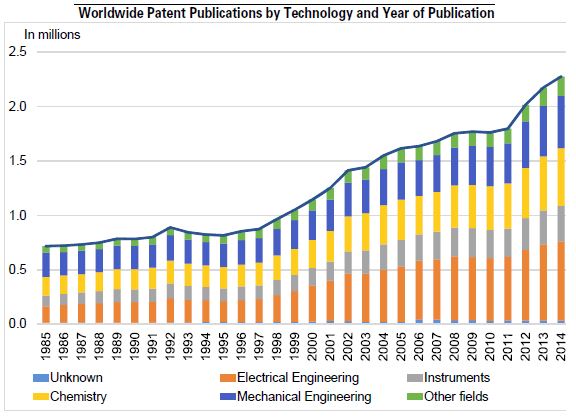Trésor-Economics No. 193 - Patents and Technical Standardisation: how to balance Competition and Innovation?
Patent systems were developed to spur innovation. Patents grant their owner a temporary monopoly on the use of the patented technology. Without a patent system (or other means of stimulating innovation), the inventor cannot fully capture the profits resulting from the innovation, and the devoted effort is insufficient. Consequently, patents encourage innovation in exchange for a temporary restriction on competition.
Standards are shared, written guidelines whose purpose is to harmonise the activity of market sectors such as the IT sector (4G, Wi-Fi, MP3, etc.) to increase efficiency. Standards can require the use of patent-protected technology. Patents that are critical for implementing standardised technology are thus named "standard-essential". In 2014, 140,000 active patents were declared standard-essential, compared with roughly 30,000 in 2000 (see Baron and Pohlmann, 2015).
When patents are standard-essential, tensions between competition and incentives to innovation rise. As standards are intended to promote a technology over time, holders of standard-essential patents possess strong market power, which they can use to demand high licensing fees or exclude competitors from the market. This can hamper innovation, raise prices, and reduce overall well being. However, incentives to innovate and take part in the standardisation process must be kept in place. To balance the twin goals of competition and incentives to innovation, the licensing of standard-essential patents is governed by specific rules, defined by the various standard-setting organisations.
Early in 2015, the IEEE (Institute of Electrical and Electronics Engineers), a US standard-setting organisation, decided to restrict the negotiating power of standard-essential patent holders by amending its intellectual property rules. However, empirical studies have failed to show that the current system of standard-essential patents licensing provides their holders with excessive negotiating power. The change prompted by the IEEE could thus deter innovation. Nevertheless, it is possible to improve the standardisation process and the valuation of standard-essential patents, particularly through measures that focus on patent quality, the effectiveness of legal procedures and the transparency of the standardisation process, among others.
